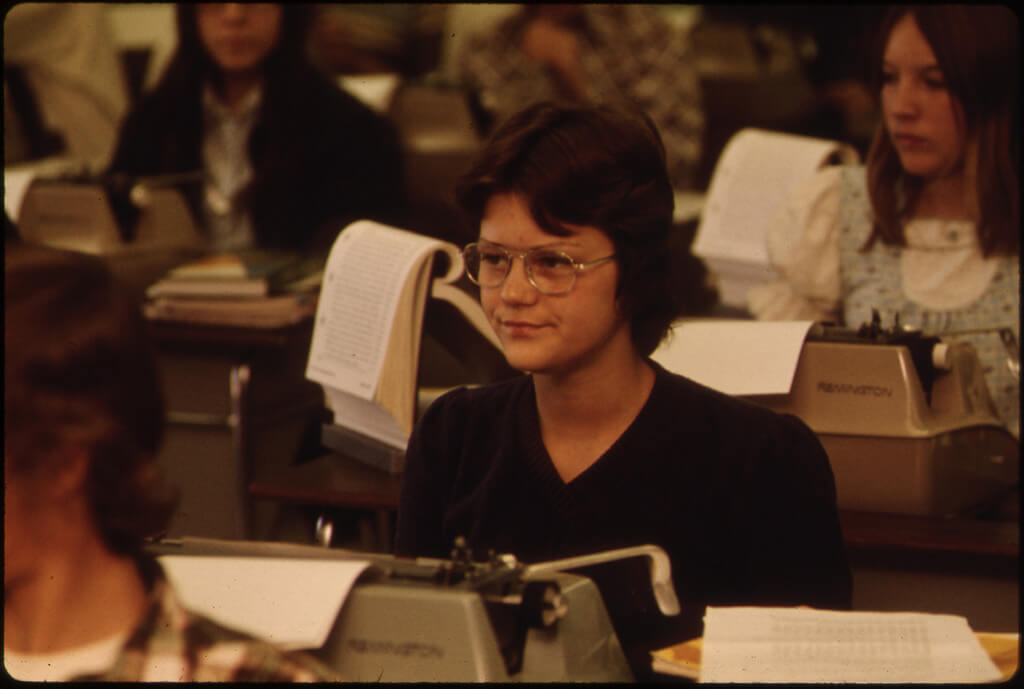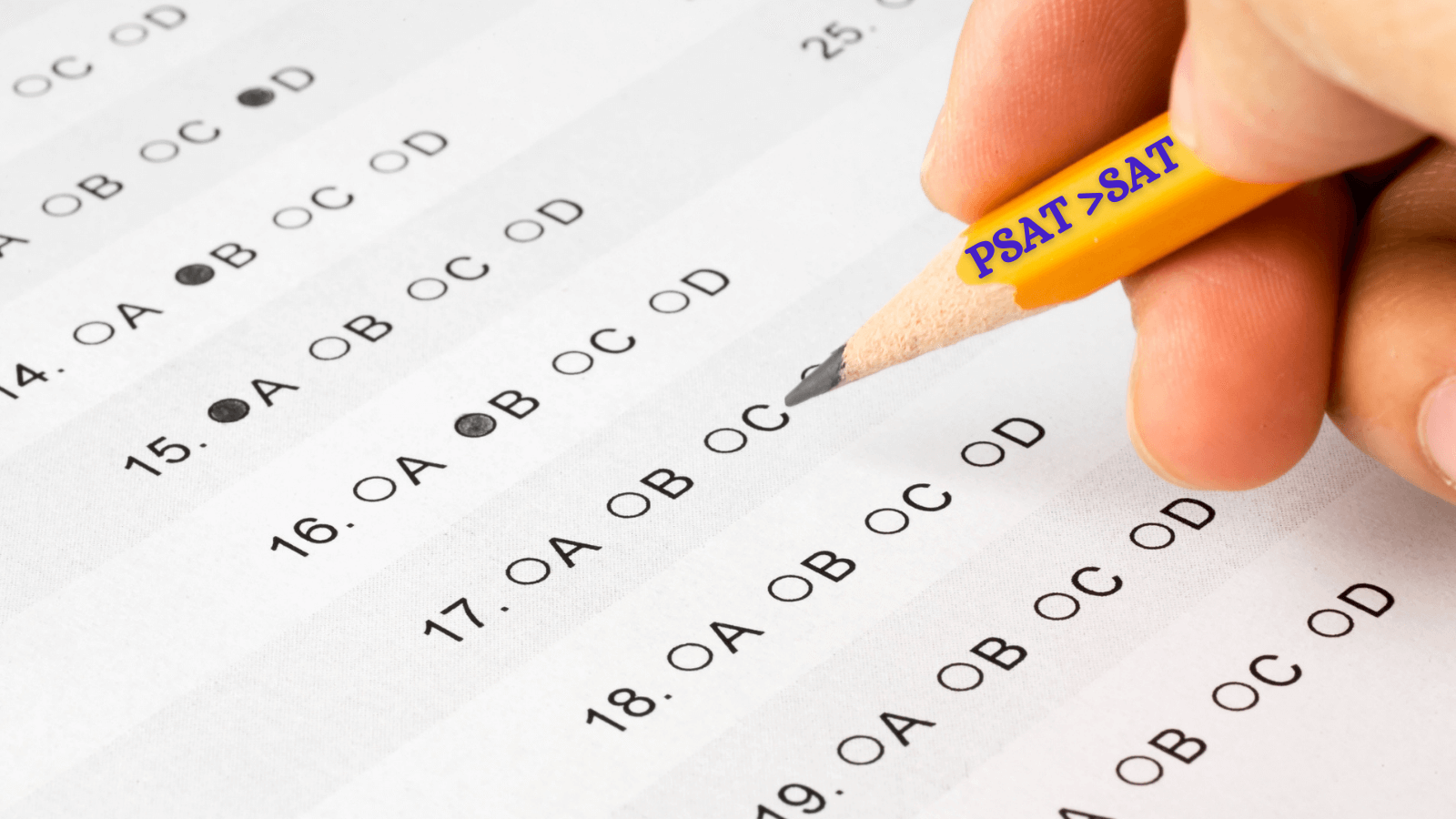Student-centric advice and objective recommendations
Higher education has never been more confusing or expensive. Our goal is to help you navigate the very big decisions related to higher ed with objective information and expert advice. Each piece of content on the site is original, based on extensive research, and reviewed by multiple editors, including a subject matter expert. This ensures that all of our content is up-to-date, useful, accurate, and thorough.
Our reviews and recommendations are based on extensive research, testing, and feedback. We may receive commission from links on our website, but that doesn’t affect our editors’ opinions. Our marketing partners don’t review, approve or endorse our editorial content. It’s accurate to the best of our knowledge when posted. You can find a complete list of our partners here.
Guide for College Students with Learning Disabilities
 By
Lisa Freedland
By
Lisa Freedland 
Lisa Freedland is a Scholarships360 writer with personal experience in psychological research and content writing. She has written content for an online fact-checking organization and has conducted research at the University of Southern California as well as the University of California, Irvine. Lisa graduated from the University of Southern California in Fall 2021 with a degree in Psychology.
Full BioLearn about our editorial policies

Maria Geiger is Director of Content at Scholarships360. She is a former online educational technology instructor and adjunct writing instructor. In addition to education reform, Maria’s interests include viewpoint diversity, blended/flipped learning, digital communication, and integrating media/web tools into the curriculum to better facilitate student engagement. Maria earned both a B.A. and an M.A. in English Literature from Monmouth University, an M. Ed. in Education from Monmouth University, and a Virtual Online Teaching Certificate (VOLT) from the University of Pennsylvania.
Full BioLearn about our editorial policies

Going to college is an exciting, but also nerve-wracking time in many students’ lives. The new responsibilities, environments, and expectations of college can be hard for any new student – but students applying to colleges with learning disabilities can face additional challenges. However, with the appropriate resources, any student with a learning disability or difference can thrive in college. Keep on reading to learn about what resources are available on college campuses!
What is a learning disability or difference?
Great question! A learning disability is any disorder impacting one’s ability to understand or speak oral or written language, do mathematical calculations, move around, or focus one’s attention. Some common examples include:
- Dyslexia: Difficulties in reading or interpreting words, letters, and other symbols
- Dyscalculia: Difficulties in learning number-related concepts, doing mathematical calculations, or performing other foundational math skills (e.g. addition, subtraction, multiplication, division)
- Processing Deficits: Difficulties with the recognizing or interpreting information taken in through the senses (touch, sight, hearing, smell, taste)
- Attention Deficit/Hyperactivity Disorder: A chronic condition characterized by difficulty paying attention, impulsiveness, and/or hyperactivity (While ADHD is not generally considered a learning disability, it often is found with other disabilities)
While these are the basic definitions of the above disorders, keep in mind that symptoms differ slightly for everyone – even for those with the same condition. Nevertheless, such conditions may make it harder, but certainly not impossible, for students to attend college and keep up with school work.
If you have a disability (learning or otherwise) and are planning on attending college – know that you’re not alone! Many students with disabilities are accepted to, attend, thrive, and eventually graduate from colleges all throughout the nation (and abroad, too).
However, before such students even get to college, they should make sure that they choose a school that’s best suited to their needs. The first step in doing that? Identifying what exactly makes a college “accommodating.”
Identifying accommodating colleges
As with any student, there are many factors to consider when choosing a college. Academic options, cost, location, and social scene remain particularly important factors for many students. For those with disabilities, however, it’s also important to look for the school that best accommodates your needs. So, how can you know that you’re picking the right school for you? Let’s see!
Types of disability support programs
It’s a true, but unfortunate fact that some colleges do the bare minimum to accommodate their learning-disabled students. Others, however, excel in that area – doing the best they can to assist their students in any way possible. To determine whether a school’s accommodations are basic, extensive, or somewhere in the middle, here are some descriptions of different “levels” of college disability support programs (going from the most “basic” to increasingly accommodating):
Basic
Basic disability support programs meet the minimum requirements for disability accommodations (as required by law). They typically have no professional learning specialists as faculty or staff, and the Dean of Students is responsible for reading documentation and awarding accommodations.
There are typically no specialized services for students with learning disabilities, so students resort to using the writing center, math center, and other general services that are available to all students.
Moderate
Moderate disability support programs have Learning Centers open solely to students with disabilities. These centers provide services and support that are much more extensive than a university-wide writing center, math center, etc. The services provided will include a wide range of accommodations, assistive technology, and professional tutors or coaches. Schools with “moderate” support programs also have their own professional, Masters-level disability support staff who understand the challenges of students with disabilities and learning differences.
Comprehensive
Comprehensive disability support programs offer students the option of a fee-based program for those who need a more structured learning system. These programs have students meet either weekly or biweekly with professionals who help them with their study skills, organizational skills, and time management. These professionals also listen to any difficulties their students are having and advocate on their behalf, if need be.
Interested students are required to fill out a separate application for acceptance into these programs, in addition to the typical college admissions application.
Also consider:
Keep in mind that these (“Basic,” “Moderate,” “Comprehensive”) are not the actual names of universities’ disability support programs. These descriptions help you figure out what support programs and services are considered “bare minimum,” and which are somewhat more impressive.
With an understanding of what the different “levels” of disability services and accommodations look like, you can better identify schools that fit your criteria. So, let’s get ready to apply to colleges!
Applying to college
There are many steps involved in applying to college, and students are largely expected to know and complete each step themselves. For those with learning disabilities, there are a few extra steps too. So, how can you make sure that you complete everything on time and are making the best choices for yourself? Well, by following our nifty timeline for applying!
Timeline for applying
Our timeline is a basic outline of what to do at certain points in your high school career. Following it will help you apply to and select the best one for you (considering your disability). While it is certainly not necessarily to follow this to a tee, following it closely helps ensure that you get everything done. Without further ado, here’s the timeline:
Junior year (Fall)
Set up an appointment with a college advisor who understands your learning disability and your needs. Have them help you set up your own timeline that includes starting to identify universities where you can thrive.
Update your testing and make sure your accommodations are set up. Set up a meeting with your tutors, educational therapist, college counselor, psychologist, and anyone else who helps you manage your learning disability. Let them know that you plan on transitioning to college in one year, and have them help you set up milestones to achieve this goal of yours.
Junior year (Spring)
Visit colleges (if possible)! When doing so, set up an appointment with the disabilities office. Inquire about what services are available, and see what level of accessibility they meet. Note how comfortable (or uncomfortable) you feel while visiting these disability offices. Can you see yourself comfortably walking into them and seeking help/services while in college? If you are unable to visit a college in person, consider setting up a virtual meeting with someone at the school’s disability office.
Senior year (Fall)
Apply to colleges that have met your standards for disability support services (and comfort level!). If you choose to disclose your ability to your university, seek assistance from your consultant when drafting this written statement.
Make sure that you are aware of college application deadlines and options, including early decision and early action.
Senior year (Spring)
Once you’ve received your acceptances, try to visit the colleges one last time. If possible, speak with students on campus to hear the experiences of people who’ve actually attended the school. Even better, try to speak to other students with learning disabilities – they may be able to inform you about whether or not the school’s services and accommodations are helpful. If you have time, consider visiting the disabilities office again to see how comfortable you feel while there.
After accepting a college offer/sending in your enrollment deposit
Make sure the testing for your diagnosis is up-to-date, and apply for accommodations with your college! Meet with your educational support team (tutors, educational therapist, college counselor, psychologist) to prepare for your interview with the disabilities office. And, if you feel you need to brush up on your academic skills before college, consider doing more educational therapy the summer before college.
Preparing for college
Those with ADHD might consider working with an academic coach their first semester of college, while those with anxiety should continue talking with their therapist over the summer and find a counselor on or near your school’s campus. Otherwise, if you feel like you’re all prepped and ready for college, you’re all set. Have fun!
After picking a college
Once you’ve picked the school that seems ideal for you, it’s important to reach out to the disabilities office for instructions on how to request accommodations. While each school has a different process, it’s most common that universities have students submit their psychoeducational report (that includes their diagnosis) upon their first meeting with the disabilities office.
This testing report must come from a licensed professional psychologist. And, while some schools accept an IEP (Individualized Education Program), others will not. Students are also encouraged to visit the website of their university’s disability office and fill out any necessary paperwork themselves.
Remember, colleges do not require you to disclose your learning disability when you apply! Even if you do disclose your learning disability or difference in your application, it is still your responsibility to notify the disabilities office. This way, you can take advantage of the many resources and accommodations available to you.
Accommodations for students with learning disabilities
On that note, what are some of the actual accommodations that students can receive while in college? Well, there are many types available, all meant to help students attend classes, complete coursework, and take exams in a way that best suits their own learning style. So, without further ado, here are some of the most common accommodations:
Adapting individual course instruction
Adapting individual course instruction involves identifying the specific learning needs of a student and adjusting how core content and information is presented to make it more accessible for that individual.
Alternative types of coursework and testing material
Alternative types of coursework or testing materials allows students to express what they’ve learned in a way that is more suitable for them (compared to the original option). Although some courses only meet the minimum legal requirements, organizations like the Universal Design of Instruction are encouraging educators to make their classes more accessible for all students. For example, students might be offered a variety of expression formats to demonstrate learning such as written papers, oral presentations, or creative posters.
Assistive software and technology
Assistive software and technology include programs to help dyslexic students better process text, to recording devices, stress management tools, and more. We’ll get more into this later!
On-campus support centers
College campuses, especially more accommodating ones, typically have a variety of on-campus support centers and services for students with disabilities. These may include disabilities services offices, trained professional staff to help students with learning disabilities, or even wellness centers. Ideally, students should get to know the staff at such support centers, so they can feel comfortable coming to them if they need help.
In-class accommodations
One’s classroom accommodations largely depend on their diagnosis. However, some common in-class accommodations include providing students with a scribe or note-taker, accessible seating, or offering a quiet room for students to take tests in.
Additional time to complete coursework and exams
Early on in the school term, professors typically request that students with disabilities inform them of their diagnoses so that these students receive additional time to complete coursework and exams. In some cases, schools may also allow students to take oral (as opposed to written) exams if they are more suitable to the student.
Disability resource centers
Besides those on campus, students can also generally find disability resource centers in their school’s surrounding community. Such organizations often have partnerships with nearby universities and can provide individualized services and support to students with learning disabilities.
Assistive technology
With the passage of time comes new and improved technologies. Among these are new assistive technologies, which refer to any equipment, software, programs, or products designed to help those with disabilities of any kind. So, as expected, many assistive technologies have since made their way into classrooms – helping students better navigate and understand their coursework. Some of the more common forms of assistive technology include:
Talking word processors (Speech-to-text)
Speech-to-text technology allows students to speak their thoughts into text, rather than being directly written or typed. This is extremely helpful for students with dyslexia or physical impairments which may make writing difficult.
Digital recorders
Those with ADHD and who struggle to pay attention in class may find digital recorders helpful, as these allow them to record classes or lectures and rewatch or re-listen to them later on.
Assistive technology centers
If students have any questions about how to use their assistive technologies, are interested in obtaining assistive technologies, or anything else of the sort – assistive technology centers are the place to go. Not only can they train students on how to use their new assistive technologies, but they can also format one’s coursework to be more accessible to students with learning disabilities.
Helpful accessibility apps
One of the many forms of assistive technology are apps, computer programs or software designed to run on mobile phones, laptops, desktops, or even watches. Apps are a great resource for those with any disability, as there are more than enough to cater to everyone’s needs.
Students with dyslexia or dysgraphia might benefit from apps like ModMath and Voice Dream. Apps such as Avaz are designed to assist individuals with communication and verbal barriers. Finally, there are apps like All Critical Thinking and Clear, which can help students stay on top of responsibilities and learn new everyday skills. This is just a sampling of the many options that are out there. A quick search will provide you with a plethora of more options, which only grow and improve as technology develops!
Pursuing financial aid
By now, we’ve covered identifying accommodating colleges, applying to college, and helpful accommodations and technologies that make college life easier. However, what about paying for college? Luckily, students with disabilities are eligible for many types of loans, scholarships, and other funding options! Let’s get into them.
First off are the non-loan funding options. HEOA, or the Higher Education Opportunity Act, has made it so students with learning disabilities can qualify for non-loan-based federal aid. Some of these non-loan funding options include:
- Federal Pell grants
- Federal work-study
- Supplemental Education Opportunity Grants
- Other federal and state grants
Besides these, however, students with disabilities may also be eligible for:
- Individual training account funds set up by a One-Stop-Career-Center
- Self-Support (PASS Plans) from the Social Security Administration
- Medicaid Funding for Community-Based Supports
On top of these, students are also eligible for federal loans. Many are specific to students with disabilities or generally directed towards them. Grants, similarly, offer many funding opportunities to students with disabilities.
Students may also be interested in federal grants. If so, we highly recommend that students fill out the FAFSA (Free Application for Federal Student Aid) – as many of the grant applications require students to have done so.
If students are interested in scholarships, there are also many directed towards students with learning disabilities! There are general scholarships, as well as specific options for students with autism, ADHD, hearing impairment and students with disabled parents.
Alternatively, if students feel that the accommodations at many schools are insufficient, they may be interested in attending a college specifically for students with disabilities. Many of these universities have their own, unique sources of funding for their students, which tend to make their costs lower than that of the average university.
Related: Top 10 Colleges for Students With Learning Disabilities
Additional Resources
And last, but not least, are some additional resources! These are simply some additional tools to help students transition to college and perform their best.
AHEAD strives to help students with learning disabilities perform their best in college. To do so, AHEAD offers coaching, mentoring, and self-advocacy skill training for students with learning disabilities.
American Youth Policy Forum offers a variety of webinars and YouTube videos meant to help students with disabilities transition to college life.
NCLD, or the National Center for Learning Disabilities, provides those with learning disabilities advice on transitioning to college. They also provide an honest look into the challenges of navigating college with a learning disability.
The Viscardi Center provides a vast number of resources, programs, and services to those with disabilities. Some of these resources are directed specifically at college-aged students.
U.S. Department of Justice and Civil Rights Division allows individuals to read through the Americans with Disabilities Act (ADA) and learn their rights. The ADA provides a thorough description of Title II and how it supports individuals with disabilities.
Frequently asked questions about attending college as a student with learning disabilities
What should I do if I encounter stigmas that may be associated with learning disabilities on a college campus?
How can students with learning disabilities prepare for college?
What if I don’t believe that I can attend college because of my learning disability?
How should colleges support students with learning disabilities?
Does having an IEP or 504 plan help you get into college?




 SAT" printed on his pencil">
SAT" printed on his pencil">
